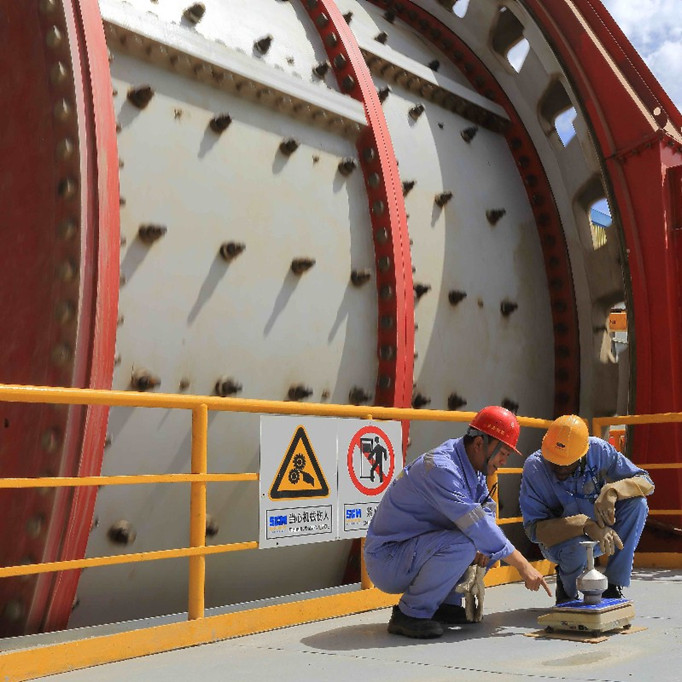Process Flow of Recovering Ferrochrome from Ferrochrome Smelting Slag
[Scheme Overview]
This scheme is designed according to the properties of ferrochrome smelting slag. The entire beneficiation process mainly includes crushing, screening, jigging, and dewatering, etc. This process can realize the purpose of recovering coarse and fine ferrochrome alloys from ferrochrome smelting slag.
[Technical advantages]

This plan is summed up by Forui Machinery after years of practical work. The biggest technical advantage of this beneficiation process is that it realizes the problem of first recovering coarse-grained alloys and then recovering fine-grained alloys. It can ensure that the ferrochrome alloy has a higher recovery rate, so as to maximize the profit of the recovery and treatment of ferrochrome smelting slag. At the same time, this solution also has many advantages such as small investment, low cost, and pollution-free.
Ferrochrome smelting slag treatment plan
The ferrochrome smelting slag treatment plan is a summary of the practical experience of Ferrochrome smelting slag at home and abroad in the past 30 years. In order to maximize the profit of the recovery and treatment of ferrochrome slag, we have carried out many practices and finally successfully developed this program. It can separately recover the coarse-grained and fine-grained alloys embedded in the ferrochrome smelting slag.
Since the market price of coarse-grained alloys is higher than that of fine-grained alloys, recycling them separately can maximize profits and at the same time ensure the recovery rate of fine-grained alloys. The program has been widely used at home and abroad, and has been unanimously recognized and praised by customers in India, Zimbabwe, Bangladesh and other countries. The following is the test video of our use of a jig to recover ferrochrome and obtain coarse and fine ferrochrome:
Features of ferrochrome smelting slag treatment plan
1. Recycle coarse-grained alloys in advance to maximize profits
The ferrochrome smelting slag treatment program designed by Forui Machinery can recover the coarse-grained alloys in the ferrochrome smelting slag in advance, and then recover the medium and fine-grained alloys. Because the market price of coarse-grained alloys is high, and the market price of fine-grained alloys is low, this can maximize profits.
2. The optimized scheme minimizes the loss of the crushing process
Ferrochrome smelting slag has a relatively high hardness, and most of the cost of processing ferrochrome slag lies in the crushing process. Reducing the loss of the crushing process is the key to increasing profits. After several generations of equipment production practices, Forui Machinery has designed the process flow and equipment configuration with the lowest loss.
3. Good treatment effect, no secondary pollution
The Ferrochrome slag treatment program has a very good effect on the treatment of ferrochrome slag. The obtained ferrochrome slag is pure and free of impurities, and the particles are distinct. Moreover, circulating water is used in the production process, and no chemicals are used, which will not cause secondary pollution to the environment. The final waste slag can also be used as construction sand and gravel aggregates or raw materials for cement plants. This process realizes the recovery and utilization of all products of ferrochrome smelting slag.
On-site video of ferrochrome smelting slag treatment
Chromium iron slag treatment process
The treatment plan of ferrochrome smelting slag comprehensively adopts the processes of crushing, screening, jigging, and dewatering. First, coarse crushing is used to crush a large piece of ferrochrome smelting slag in two stages to obtain ferrochrome smelting slag below 30mm. Then the crushed product is sent to a large particle jig for sorting to obtain coarse-grained alloy and waste slag. After dewatering, the waste slag enters the fine crusher for further pulverization, and the fine-grained ferrochrome smelting slag is obtained. The fine-grained ferrochrome slag enters the fine-grained jig machine to obtain the final waste slag and fine-grained ferrochrome. After dewatering, the final waste residue can be sold as sand or used as raw material for cement plants. Coarse-grained alloys and fine-grained alloys are sold by ferrochrome smelters at market prices.
You may also be interested in the following articles:






Responses